Food technology companies reinvent the food supply chain with plant-based proteins, cultured meats and 3D-printed meats. We take a look at how these industry disruptors give much food for thought beyond the whims of the palate.

Food technology companies are seeing the light of day and growing faster than the magic beans in Jack and the Beanstalk, with a significant number that have already either entered or made an impact on the market, with more to come that are still going through their Seed Rounds or Series As. Both international and local start-ups and companies are stirring up the pot with a staggering mix of offerings for consumers.
Whether it’s beef, pork, chicken, shrimp, lobster, milk or eggs, companies are offering alternative proteins for advocates of a plantbased diet and cultured meats grown in a lab. In our last issue, we covered many – though not exhaustive – brands that are now available. Since then, the developments have kept their momentum. The big boys are jumping in to either partner or fund the creative boys with their innovations. Singapore’s Float Foods has just received a grant from Temasek Foundation to commercialise OnlyEg, a plant-based whole egg substitute. Another local player, Shiok Meats, has reportedly raised US$12.6 million in Series A funding for its lab-grown shrimp, and one of its major shareholders is Seeds Capital, the investment arm of Enterprise Singapore. These examples show that this industry is a blue-eyed boy right now with the government paying close attention to nurturing these startups to unicorns and more. But more importantly, it begs the question “How will consumers react to these new product offerings and what is the potential demand that will arise from it?”
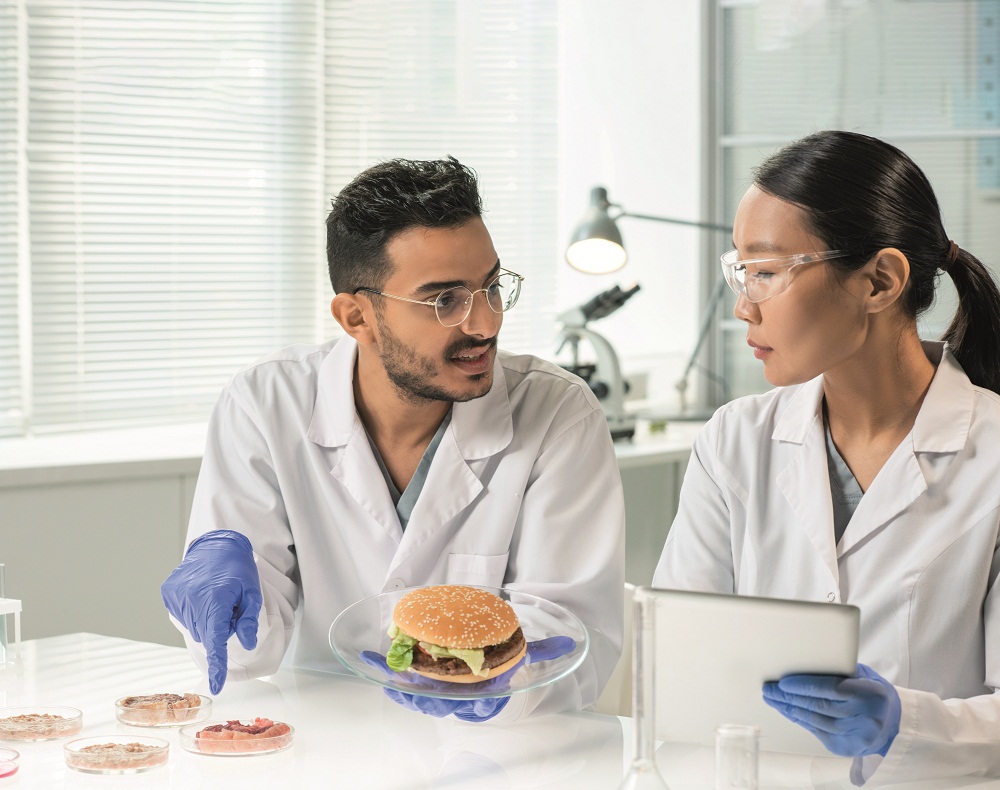
DRIVEN BY PALATE OR PURPOSE?
Food technology companies are visionary, yet they are also disruptors because of their aim to displace – and eventually replace – the traditional food supply chain. But the reason for their rapid growth and strong government support show that there is no smoke without a fire. The demand is there, and Asia is a market with much upward potential to be tapped into. A vast number of consumers on vegetarian diets are hungry for more options, and the generations of millennials and 20-somethings are also a voice to be heard as they are the ones who have thrown conventional brand loyalty out the window in favour of consumer behaviour that questions and distrusts. They resonate with brands that align with their beliefs and have a socioenvironmental agenda for the better good of the planet.
So, plant-based proteins are on the highway to acceptance, especially those that are sustainably sourced. It may not win over all meat lovers, but new brands are gaining traction. What about meats that are grown in a science lab or printed by a 3D printer?
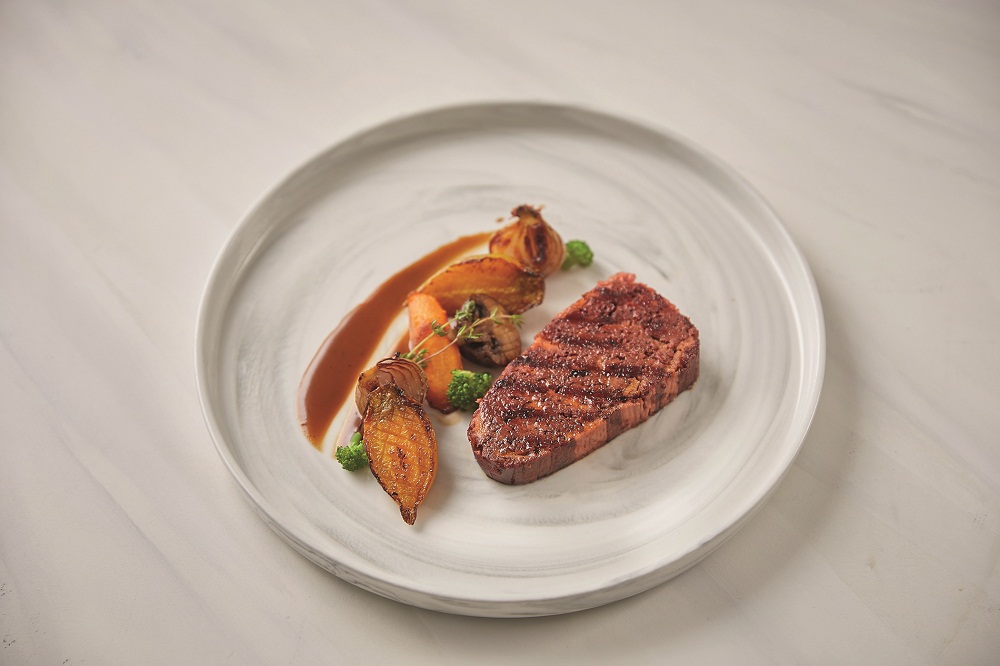
“Now that high-quality plant-based meats are increasingly available through mainstream restaurant chains, and cultivated meat is beginning to appear on the menu in Singapore, the race is on to scale-up operations and invest in equipment to make larger volumes of product, which will deliver further cost savings to consumers.”
MIRTE GOSKER, ACTING MANAGING DIRECTOR OF THE GOOD FOOD INSTITUTE ASIA PACIFIC
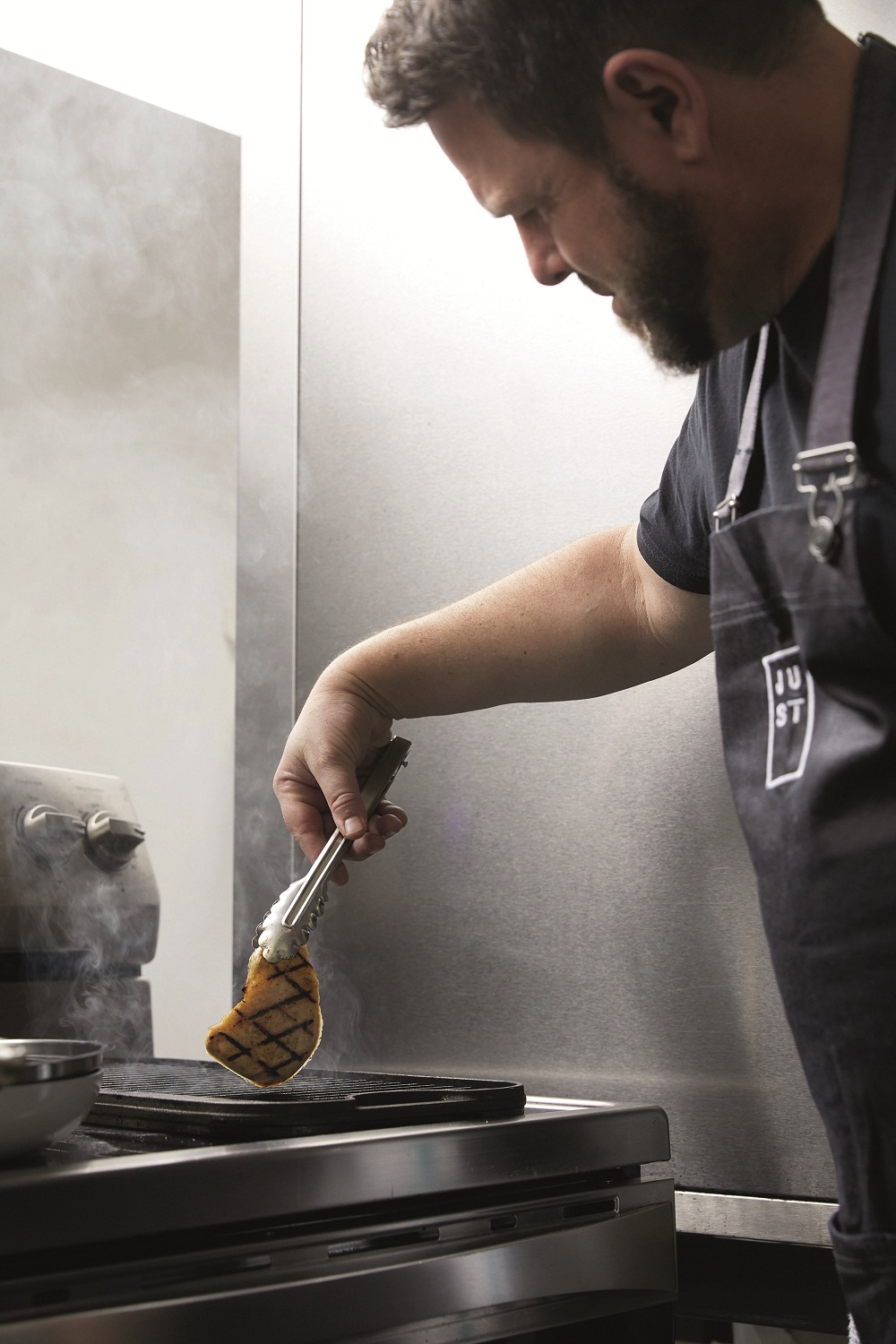
Will they be well received? Before you let your connoisseur side decide and dismiss them with disapproval, perhaps it is time to think long and hard about how we enjoy our food and the price we have to pay for that enjoyment. These innovations, whether we like it or not, serve a purpose by aiming to solve urgent social and environmental problems being faced today. What are they? Shall we begin with global deforestation caused by agriculture; greenhouse gas emissions caused by animal agriculture; or inhumane slaughtering of animals in commercial food manufacturing facilities?
However, it doesn’t mean that appreciation of a juicy A4 Miyazaki Wagyu ribeye, an umami blufin tuna sushi or a flavourful Poulet de Bresse is wrong. And there is no need to find plant-based substitutes for these cravings if you don’t want to. There is always the option of having real meat that has been sustainably sourced, cultivated and grown in a lab. The call to action for us is not as extreme as we think. Meat lovers can begin with mindful eating that moderates cravings with a flexitarian diet. Just by decreasing our intake of conventional meats, we can make a collective difference. This shift in mindset will trigger the behaviourial changes that will pave the way to acceptance, and all while the industry continues to refine their products and improve their taste and texture to please palates.
If current reviews are anything to go by, it would seem that Redefine Meat’s 3D-printed Alt-Steak and Eat Just’s Good Meat cultured chicken are gaining the acceptance of chefs. Even enjoying endangered bluefin tuna may no longer be an issue as California-based start-up Finless Foods is growing them in the lab. Of course, we would have to wait for the economies of scale to kick in before these companies cast a wider net of global distribution. Singapore is getting a head-start with the presence of Eat Just which is setting up a manufacturing facility here for its Just Egg, with plans to scale up for its Good Meat range of cultured meats. Its chicken range is already available at private club 1880 (find out what the chef has to say in our side story on p39), whose members represent the thinkers and innovators of our progressive society. Seafood lovers who are only all too aware of the ocean’s depleting resources will be happy to know that local start-up Shiok Meats has already moved on to cultured lobster after the success of its cultured shrimps.

WHAT’S STIRRING THE POT?
“The Singapore story is just beginning. Now that Eat Just Inc. has been approved to sell their cultivated chicken bites, other companies are lining up to access the world’s first cultivated meat market. The Singapore Food Agency has already said that Shiok Meats’ cultivated shrimp is in the pipeline, and so is cultivated meat from another local startup Ants Innovate. Hong Kong-based Avant Meats is also in talks with Singapore’s food regulator about obtaining approval to sell their cultivated fish maw—a high-value seafood ingredient used in traditional Chinese cuisine,” says Mirte Gosker, Acting Managing Director of The Good Food Institute Asia Pacific.
Gosker added that Singapore’s welcoming ecosystem for innovation is a boon for investments in cultured meats and alternative proteins. “Now that consumers are able to walk into a restaurant in Singapore and actually eat real chicken meat that doesn’t harm a single bird, the industry is real in a way that, for many observers, it hasn’t been until now. Even though the volume of cultivated meat being sold is still the tiniest of drops in the bucket, we believe that it serves as a useful proof of concept that will accelerate growth of the space globally.”
The outlook for food technology innovation looks bright in Asia, but there are top three decisive factors that will impact its development. It’s taste, convenience and cost, said Gosker. “Now that high-quality plant-based meats are increasingly available through mainstream restaurant chains, and cultivated meat is beginning to appear on the menu in Singapore, the race is on to scale-up operations and invest in equipment to make larger volumes of product, which will deliver further cost savings to consumers. It will also be crucial for brands rolling out new plantbased products to take into account the local culinary culture and mindset.
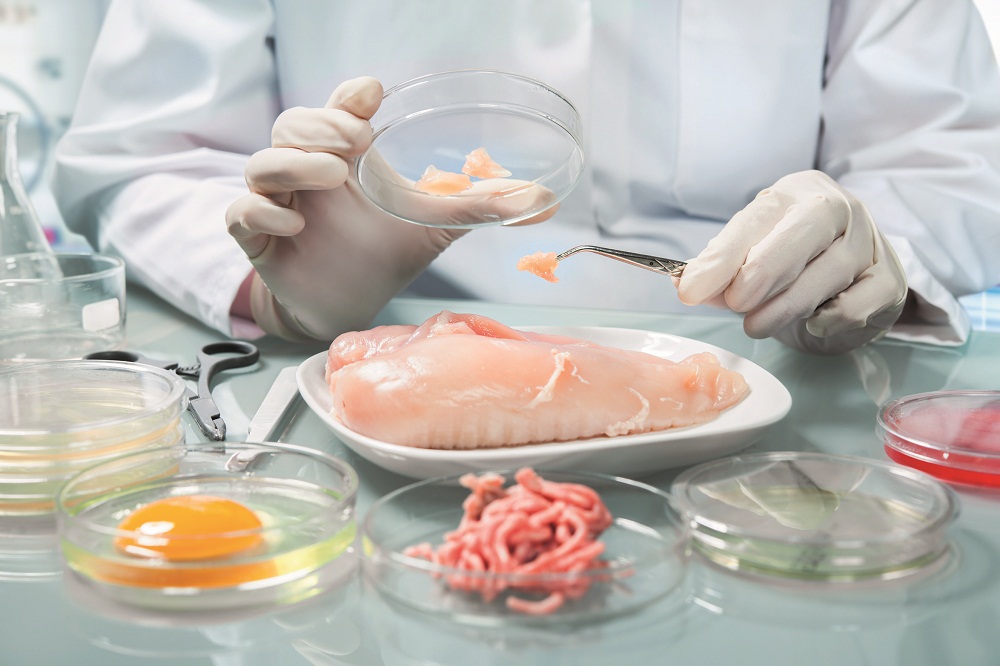
“Meat analogues have been widely distributed across Asia for many decades, mainly serving the large Buddhist community. In China, for example, these products fall into the well-established industry category of soy products. Forty-one percent of Chinese consumers surveyed by IPSOS in 2020 said that they think plant-based meat can be used to replace what they’ve known as soy products. The use of new and innovative ingredients may play a key role in differentiating a plant-based meat product from that association with traditional ‘mock meats’, which is expected to be sold at a low price point, comes with historical image baggage, and has not succeeded in attracting a broader audience over the years,” shares Gosker.
To add to Gosker’s point, the international market appeal of new products that are backed by strong lifestyle branding and packaging will appeal to a new generation of consumers who are drawn to their secular and holistic associations. Whether it’s organic, allergen-free, freerange, plant-based or cultured, these products will take pride of place on the shelves of organic supermarkets that champion holistic living and mindful eating.
BIOTECHNOLOGY SCORES WINS
San Francisco-based Eat Just made the headlines late last year for securing the world’s first regulatory approval from Singapore Food Agency (SFA) to sell its cultured chicken commercially under its Good Meat brand. CEO & Co-founder Josh Tetrick shared that it took about two years to develop the infrastructure and safety protocol of its cultured chicken. Currently, it has achieved a 14-day production time as compared to the time line of about 45 days for conventional chicken to go from birth to slaughter. The process of growing cultured meats begins with stem cells, the building blocks of muscle and other organs, which are placed in petri dishes with amino acids and carbohydrates to activate the rapid multiplication of cells.
Eat Just’s cultured chicken has not just passed the test for the quality and consistency of its manufacturing process; it has also proven to have a high protein content, a diversified amino acid composition, high relative content in healthy monounsaturated fats and is a rich source of minerals. Also, no antibiotics are used in its proprietary process, while safety validations prove that it has an extremely low and significantly cleaner microbiological content as compared to conventional chicken.
These factors make a compelling statement for Good Meat amidst Covid-19 pandemic fears as well as that of zoonotic diseases in general. In this scenario, Tetrick’s vision of having conventional meats off the menus in restaurants makes a lot of sense, with the caveat that its replacement is priced competitively and meets culinary expectations (read more about Tetrick’s vision for Eat Just on pg 56).
Tetrick shared that the roll-out of Good Meat products would be to restaurants for now, while plans for retail distribution would likely be implemented before the end of 2022. “Eventually, we do want Good Meat to be available in butcheries and grocery stores and at a good price point. Right now, it is priced like that of premium chicken, but within the next five to 10 years, a gradual process of cost reduction will kick in. We are also expanding our product line, with chicken breast meat following up on our launch of chicken bites. Cultured beef and pork are also in the pipeline,” adds Tetrick.
Cultured meat will either have its ardent fans or die-hard traditionalists who reject it, but ultimately, it’s real meat derived from stem cells ethically harvested from its source, and this meat is hormone- and chemical-free. That makes a lot of difference, and Tetrick has this to say to epicureans, “You can still choose your favourite meats from the menu, whether it’s an umami-rich wagyu cow from Japan or the fattiest bluefin tuna. And you can enjoy it without sacrificing anything, and in a way that aligns with your values.”
"We are also expanding our product line, with chicken breast meat following up on our launch of chicken bites. Cultured beef and pork are also in the pipeline"
EAT JUST CEO & CO-FOUNDER JOSH TETRICK

1880’S EXECUTIVE CHEF COLIN BUCHAN SHARES HIS PERSPECTIVE ON CULTURED CHICKEN.
Why are you open to cultured chicken and how would it benefit your diners?
“At 1880, I have noticed that while diners still love their meat, there is an openness to plant-based alternatives, and curiosity about cultured meat. Lately, we have had more vegan and vegetarian menu requests – trends such as flexitarianism, and reducetarianism are definitely on the rise. Being able to make history with our diners by offering a new and more sustainable alternative is hugely exciting.
We collaborated with Good Meat on a dining experience comprising a 4-course menu starting with three unique vegan dishes that reflect the evolution of the chicken and its environmental impact as it became a key food source for humans. Following that, we served two Good Meat dishes: the Chinese bao and an American fried chicken and waffle, as these are the two nations that are the largest consumers of chicken. We want to inspire important conversations around our food sources while having a delicious and thought provoking dinner. “
Did you have to change the way you cut, season and cook the cultured chicken?
“The cultured chicken by Good Meat comes in a bite-sized, breaded form which influences how the dish is prepared and presented. The texture and taste of cultured chicken is just like traditional chicken – because it is chicken. We work with it as we would with conventional chicken, just in the form of a nugget.”
How do you plan to develop your menu offerings of cultured chicken?
“The opportunity to work with an entirely new category of food and conceptualise an interactive meal to introduce the cultured chicken has been an incredible experience. Once Good Meat cultured chicken production ramps up, it will open many possibilities to create unique and traditional dishes for diners. We are looking at hosting tasting sessions in the coming months with new dishes to show the versatility of cultured chicken.”

THE FUTURE OF 3D FOOD PRINTING
The other technology that pushes the boundary of acceptance is 3D food printing. One company that is creating a tidal wave with its Alt-Steak product is Israeli start-up Redefine Meat, which recently organised a blind tasting in partnership with Best Meister, a meat distributor, in Tel-Aviv. The event was carried out in a meat-branded food truck concept that attracted over 600 visitors and served almost 1,000 orders. According to reports, Alt-Steak secured an acceptance rate of over 90% based on metrics such as taste, texture and mouthfeel.
“We can iterate a steak to be softer, harder, juicier with less fat, and much more – all with a simple click of a button,” says Eshchar Ben-Shitrit, CEO & Co-Founder of Redefine Meat. He explained further on why his 3D printing process customises meats with a high level of flexibility. “We use a special kind of 3D printing process where three ingredients are printed simultaneously to form the product – our Alt-Muscle (plant-Protein), Alt-Fat (plant-fat) and Alt-Blood (natural colours and flavours). Our machine performs a specific technological process for each and combines them in the 3D model in the print software. Our materials are food items and eventually consumed, so they inherently have a high viscosity. In addition, we print a ‘full’ product – unlike plastic 3D printing that prints just the shell – so we don’t need any additional materials to support the product while it’s printed. Importantly, using a digital 3D printing process that changes in the product comes at zero cost or complexity. We can use a 3D model of an entirely different meat product with the same machine, process and ingredients, whereas traditional food production technologies have to change entire formulations.”
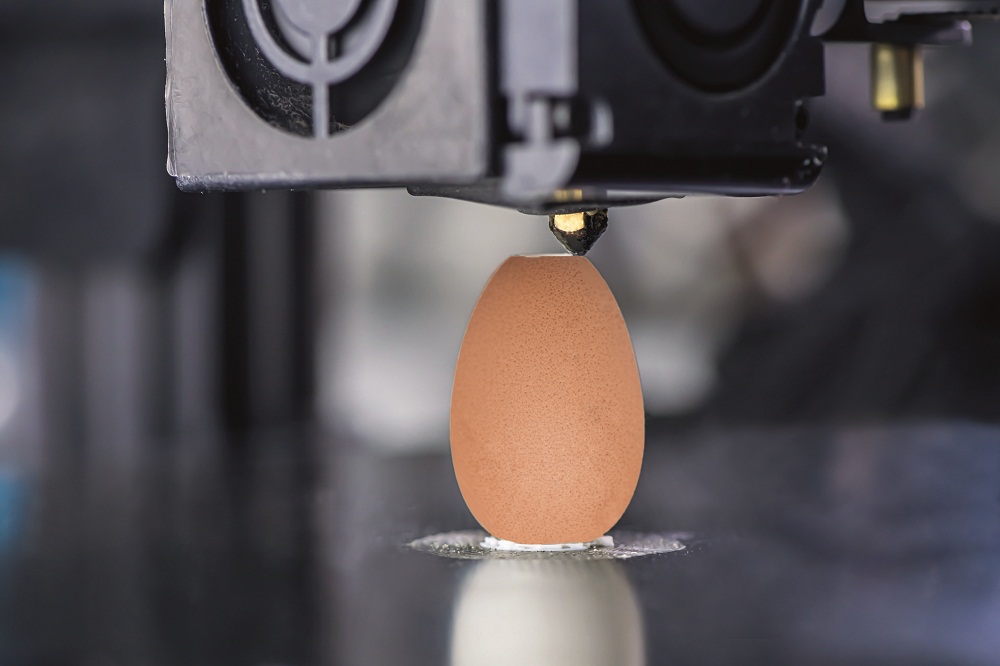
"Many people believe that mimicking the texture of meat is the biggest challenge, but texture can be defined quite easily and measured in precise ways."
ESHCHAR BEN-SHITRIT, CEO AND CO-FOUNDER OF REDEFINE MEAT
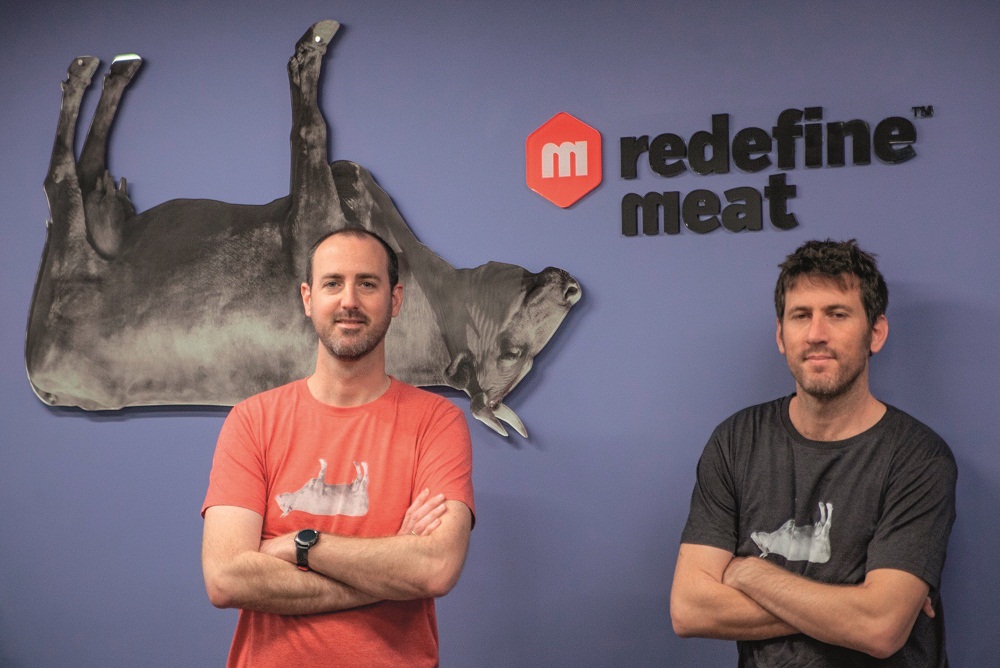
Whilst some aspects of 3D printing leave much to be desired with its rigid configurations, Redefine Meat has invested in technology that balances hundreds of different parameters to produce 3D-printed meat that excels in all parameters at once to meet the right requirements for texture, flavour and colour. Ben-Shitrit explains: “Many people believe that mimicking the texture of meat is the biggest challenge, but texture can be defined quite easily and measured in precise ways. We discovered that even when you have the perfect texture from an analytical perspective, if you don’t get the colour right or have a slight variation in flavour, consumers will not give the product’s texture a high score.
“This is where the rapid prototyping and digital production benefits of our 3D printing technology come into play. During the development phase, we can make new design iterations to the meat’s structure digitally via software within minutes and 3D print several new meat prototypes with different structural parameters for sampling within an hour. Digital meat production has also opened the door to advanced AI & machine learning technologies that help us to further optimise the alternative meat experience for consumers. With the ability to learn consumer habits, likes, dislikes and more, we are able to feed these learnings through into the development and refinement of our meat. For example, if consumer feedback data suggests the meat is too fatty, digital files can be optimised using computational methods to re-structure the distribution of fat to address the issue.”
Redefine Meat has worked with butchers, chefs and food technologists to map out parameters that account for preferences in taste and texture, which means that Alt-Steak may be ordered according to your favourite cut. “The main components of Alt-Steak are pea proteins and soy, but with the ability to switch files and print different cuts ondemand, local meat distributors can also provide restaurants and stores much more versatility with their product offering and according to demand – such as the specific marbling of Wagyu beef from Japan or the texture of grass-fed Australian Angus prime beef – at the click of a button,” says Ben- Shitrit. With pilot tests underway in Israel, Alt-Steak products will gradually expand into Europe and Asia via partners.